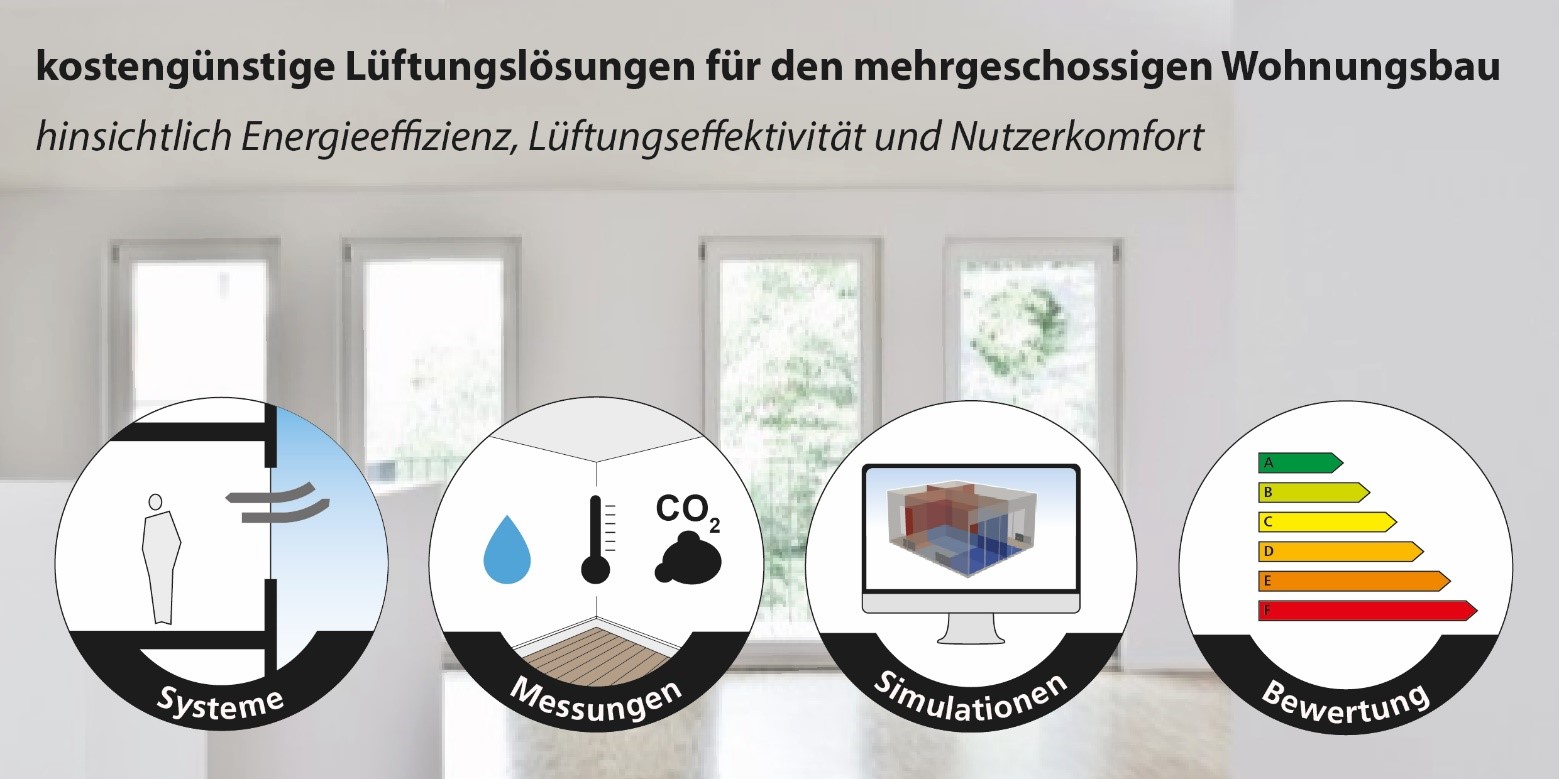Constructing multi-story residential buildings currently poses a series of challenges: On the one hand, there is enormous pressure to cut costs, which means that building costs must be kept as low as possible. On the other hand, important standards on moisture control, air quality and energy efficiency have rightly been introduced but these increase the outlay for technical building equipment. Following the amendment to DIN 1946-6, it is now possible not only to opt for natural window ventilation or fan-assisted ventilation, but also to combine the two. In the past, fan-assisted ventilation solutions have hardly ever been used in residential buildings because of their high installation costs. The consequence of this is often mold problems and poor air quality and thus a negative impact on the building fabric and its users. Furthermore, the potential to improve energy efficiency has also not been fully exploited.
AIR-COSIM – Combined ventilation solutions for building low-cost housing
Project goals
The AIR-COSIM project focuses on the amendment of DIN 1946-6 and investigates the combined use of ventilation systems for building low-cost housing. Various fan-assisted systems can be combined with one other or with natural ventilation. As a result, inexpensive ventilation concepts can be developed that not only ensure moisture control and hygienic air exchange but also operate in an energy-efficient manner. In particular, the combination of different fan-assisted systems has not yet been sufficiently investigated, which is why there are no recognized design guidelines. Accordingly, systematic studies need to be conducted and practical recommendations derived in order to exploit the potential of these new combination options.
In the research project, various combined ventilation solutions for residential buildings are therefore being evaluated by carrying out metrological tests and creating modern zonal simulation models. The measurements are taken in a real environment, thus providing practical analysis values for evaluating the system solutions as well as for validating the corresponding simulation. The validated simulation also offers the opportunity to examine further combination options and usage scenarios. In addition to assessing costs and energy efficiency, features that are relevant for users, such as thermal comfort, acoustics, ventilation efficiency and air quality, are also evaluated. This enables an all-round evaluation and forms a valid planning basis for the use of the systems. The results ensure quality and user acceptance and open up market potential for home ventilation systems.
Current project status
At the start of the AIR-COSIM project, a selection of relevant ventilation combinations and feasible usage scenarios was made, taking into account the special requirements of low-cost housing. Based on this, a detailed test plan was drawn up for the metrological tests in the housing laboratory at Rosenheim University of Applied Sciences. Parallel to setting up and organizing the metrological tests, Fraunhofer IBP programmed a simulation environment corresponding to the real test setup with the Indoor Environmental Simulation Suite (IESS). The measurements taken under realistic conditions in the housing laboratory delivered practice-oriented performance values of the selected solutions. Coupled with the simulation models generated in parallel, the study enables a large number of possible solutions and combinations to be tested. This forms a valid basis for planners to dimension technical building services.
Based on the measurement and simulation results, an evaluation matrix was developed to identify effective and cost-efficient system combinations. This allows different solution combinations to be compared in terms of cost efficiency, air quality and thermal comfort, and can be used by planners as a design and dimensioning tool.
To complement the characteristic values measured, important aspects of subjective perception were also studied with the aid of test persons in a focus group and a subsequent online survey. Thus, potential users could give feedback about the requirements of the ventilation systems, as well as evaluate the components investigated in the project.
The results of the project provide a good overview of suitable and inexpensive combinations of ventilation systems. In addition, valid simulation models were developed to demonstrate these ventilation solutions in different apartment layouts. This, coupled with the evaluation matrix developed, has created a valid planning basis for combining natural and mechanical ventilation systems tailored to requirements.
Project partners
- Rosenheim University of Applied Sciences
- Maico Elektroapparate-Fabrik GmbH
- DIPLAN Gesellschaft für Digitales Planen und Bauen GmbH
- Velux
